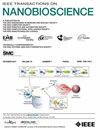Understanding the Crossing of Blood–Brain Barrier Using Nanocarriers: Current Trends and the Role of Physiologically Based Pharmacokinetic Modeling
IF 4.4
4区 生物学
Q1 BIOCHEMICAL RESEARCH METHODS
引用次数: 0
Abstract
Drug delivery to the brain across the blood-brain barrier (BBB) has been a challenge for drugs unable to passively diffuse through it. Various parameters of the drugs contribute to the potency to cross the barrier made up of tight junctions of the epithelial cell membrane. For drugs with low permeability, novel nanoscale drug carriers have been developed to enhance delivery into the brain by circumventing the BBB. The carriers are fabricated in nanoscale for better penetration of the tight junctions in BBB. Understanding the physiology of the blood-brain barrier and the mechanism of molecular transport across it is crucial for designing effective drug carriers. Physiologically based pharmacokinetics (PBPK) modeling is a powerful tool for simulating the permeability of drugs and drug carriers across the BBB. The perfusion-limited kinetics and permeability-limited kinetics are two key equations that describe the transport of the drug into the brain and aiding in the determination of whether surface modifications to the drug carrier are necessary to improve the permeability. This review discusses the mechanisms of molecule transfer across the BBB, the parameters that filter drugs from the blood, the role of nanocarriers in enhancing permeability, the significance of PBPK modeling in extrapolating利用纳米载体了解血脑屏障的穿越:当前趋势和基于生理的药代动力学模型的作用。
药物通过血脑屏障(BBB)进入大脑一直是一个挑战,因为药物不能被动地扩散通过它。药物的不同参数影响了它们穿过上皮细胞膜紧密连接的屏障的效力。对于低通透性的药物,新的纳米级药物载体已经被开发出来,通过绕过血脑屏障来增强药物进入大脑的能力。为了更好地穿透血脑屏障中的紧密连接,载体是在纳米尺度上制造的。了解血脑屏障的生理学和分子在血脑屏障上的转运机制对于设计有效的药物载体至关重要。基于生理的药代动力学(PBPK)模型是模拟药物和药物载体通过血脑屏障的渗透性的有力工具。灌注限制动力学和渗透性限制动力学是描述药物进入大脑的两个关键方程,有助于确定是否需要对药物载体进行表面修饰以改善渗透性。本文讨论了血脑屏障分子转移的机制、药物从血液中过滤的参数、纳米载体在增强血脑屏障渗透性中的作用、PBPK模型在推断药物体内渗透性数据中的意义,以及推荐的表面修饰以优化药物向大脑的传递。
本文章由计算机程序翻译,如有差异,请以英文原文为准。
求助全文
约1分钟内获得全文
求助全文
来源期刊

IEEE Transactions on NanoBioscience
工程技术-纳米科技
CiteScore
7.00
自引率
5.10%
发文量
197
审稿时长
>12 weeks
期刊介绍:
The IEEE Transactions on NanoBioscience reports on original, innovative and interdisciplinary work on all aspects of molecular systems, cellular systems, and tissues (including molecular electronics). Topics covered in the journal focus on a broad spectrum of aspects, both on foundations and on applications. Specifically, methods and techniques, experimental aspects, design and implementation, instrumentation and laboratory equipment, clinical aspects, hardware and software data acquisition and analysis and computer based modelling are covered (based on traditional or high performance computing - parallel computers or computer networks).
 求助内容:
求助内容: 应助结果提醒方式:
应助结果提醒方式:


